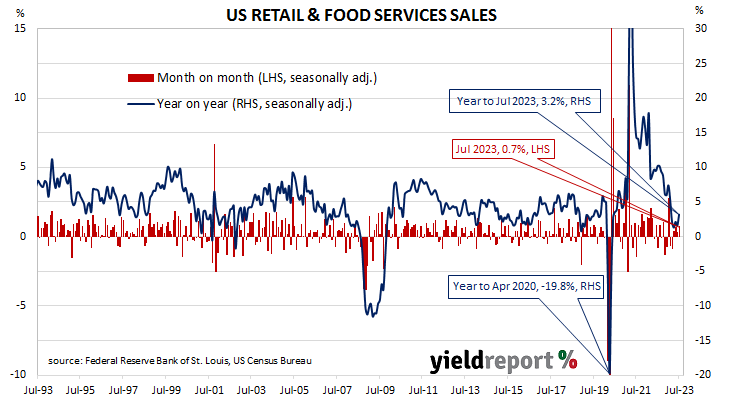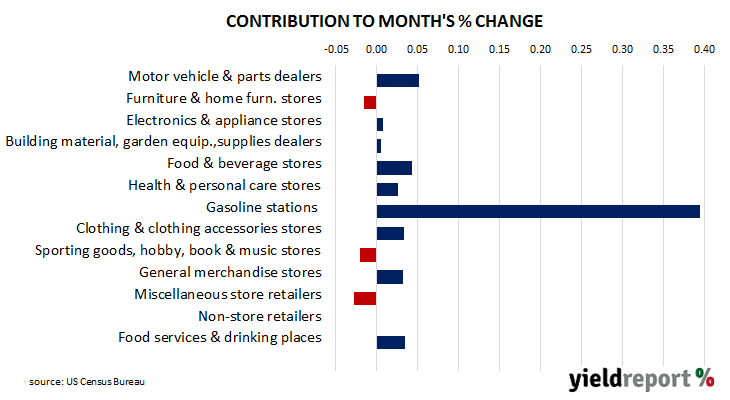Summary: US retail sales up 0.6% in August, more than expected; annual growth rate slows to 2.5%; NAB: downward revisions take some shine off initially reported strength; Treasury yields up; 2024 rate-cut expectations soften; higher sales in nine of thirteen retail categories; gasoline station sales largest single influence on month’s result.
US retail sales had been trending up since late 2015 but, commencing in late 2018, a series of weak or negative monthly results led to a drop-off in the annual growth rate below 2.0%. Growth rates then increased in trend terms through 2019 and into early 2020 until pandemic restrictions sent it into negative territory. A “v-shaped” recovery then took place which was followed by some short-term spikes as federal stimulus payments hit US households in the first and second quarters of 2021.
According to the latest “advance” numbers released by the US Census Bureau, total retail sales increased by 0.6% in August. The result was considerably greater than the 0.1% increase which had been generally expected and slightly more than July’s 0.5% rise after it was revised down from 0.7%. However, on an annual basis, the growth rate slowed from July’s revised rate of 2.6% to 2.5%.
“Those downward revisions take some of the shine off the initially reported strength in the consumer through Q3,” said NAB economist Taylor Nugent, “but consumption is resilient and is still set to increase in Q3.”
US Treasury bond yields rose moderately on the day. By the close of business, 2-year and 10-year Treasury yields had both gained 4bps to 5.01% and 4.29% respectively while the 30-year yield finished 3bps higher at 4.38%.
In terms of US Fed policy, expectations of a lower federal funds rate in the first half of 2024 softened. At the close of business, contracts implied the effective federal funds rate would average 5.335% in September, slightly above the current spot rate, 5.42% in November and 5.435% in December. September 2024 contracts implied 4.915%, 42bps less than the current rate.
Nine of the thirteen categories recorded higher sales over the month. The “Gasoline stations” segment provided the largest single influence on the overall result, rising by 5.2% over the month and contributing 0.39 percentage points to the total.
The non-store segment includes vending machine sales, door-to-door sales and mail-order sales but nowadays this segment has become dominated by online sales. It now accounts for nearly 17% of all US retail sales and it is the second-largest segment after vehicles and parts.



